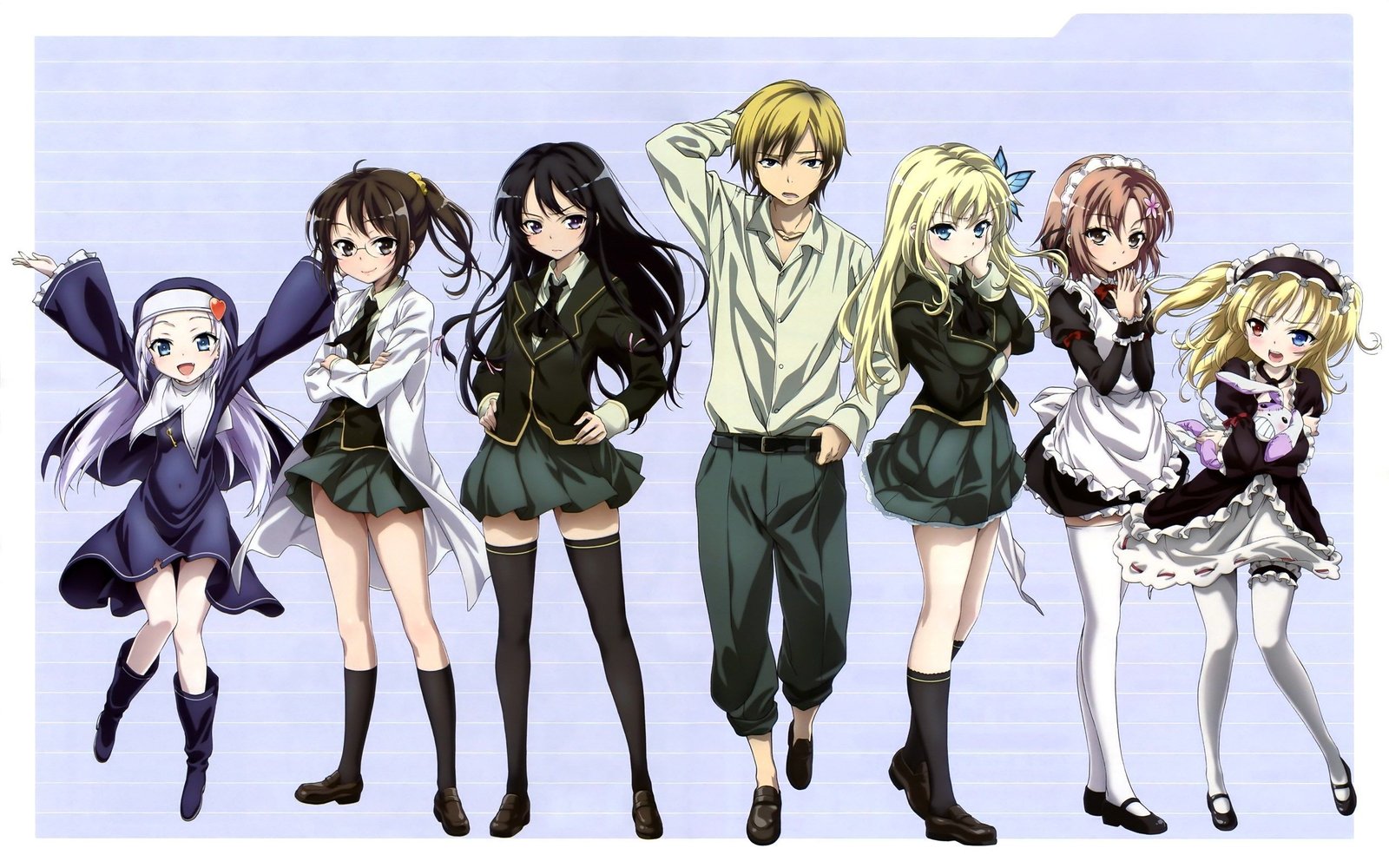Introduction
In the vast landscape of anime romantic comedies, “Boku no Tomodachi ga Sukunai” (literally “I Don’t Have Many Friends”) stands out as a hilariously self-aware exploration of social anxiety, teenage awkwardness, and the desperate quest for connection. This series isn’t just another high school comedy – it’s a razor-sharp commentary on loneliness, social skills, and the painful journey of making friends.
Plot Overview
The story centers around Kodaka Hasegawa, a transfer student with blonde hair and a naturally intimidating appearance that makes him seem like a delinquent. Despite his looks, Kodaka is actually a kind-hearted individual struggling to make friends due to misunderstandings about his appearance. His life takes a dramatic turn when he encounters Yozora Mikazuki, a sharp-tongued and socially inept girl who creates a “Neighbors Club” – a club dedicated to helping socially challenged students learn how to make friends.
The club quickly becomes a magnet for a group of wonderfully dysfunctional characters, each wrestling with their own social inadequacies. From Sena Kashiwazaki, a beautiful but socially awkward rich girl, to Rika Shiguma, a brilliant but eccentric researcher, the ensemble cast creates a perfect storm of comedic interactions and heartfelt moments.
Character Analysis
Kodaka Hasegawa
The protagonist embodies the classic outsider. His misunderstood appearance prevents him from forming genuine connections, making him a sympathetic character who represents the struggles of many teenagers feeling isolated in social environments.
Yozora Mikazuki
A complex character whose acidic wit masks deep insecurities. Her interactions with other club members reveal a multilayered personality that’s both frustrating and endearing. She’s the catalyst that drives much of the series’ comedic and emotional development.
Sena Kashiwazaki
Representing the “popular girl” archetype with a twist, Sena is simultaneously privileged and profoundly lonely. Her interactions with Yozora are particularly hilarious, featuring constant verbal sparring that highlights their similar underlying vulnerabilities.
Themes and Social Commentary
“Haganai” goes beyond simple comedic tropes by offering profound insights into social dynamics. The series explores:
- The challenges of making genuine connections in a complex social landscape
- The impact of first impressions and appearance on social interactions
- The universal experience of feeling like an outsider
- The different coping mechanisms people develop to handle social anxiety
Animation and Production Quality
Produced by AIC Build, the anime boasts high-quality animation with vibrant character designs and expressive facial animations. The visual style perfectly complements the series’ comedic timing and emotional nuances.
Humor and Emotional Depth
What sets “Haganai” apart is its ability to balance razor-sharp comedy with genuine emotional moments. The humor stems from character interactions that feel authentic rather than forced, making the comedic elements land with surprising depth and relatability.
Recommended Audience
This anime will particularly resonate with:
- Fans of romantic comedy anime
- Viewers who enjoy character-driven narratives
- Those who appreciate meta-humor and social commentary
- Anime fans who like complex, flawed characters
Conclusion
“Boku no Tomodachi ga Sukunai” is more than just another high school comedy. It’s a nuanced exploration of friendship, loneliness, and the complex social dynamics that define teenage experiences. With its perfect blend of humor, heart, and social commentary, it offers a unique viewing experience that will leave you both laughing and reflecting.
FAQ
Q: Is “Haganai” suitable for all ages?
A: The anime is rated for teens and contains mild fan service, comedic violence, and mature themes. It’s best suited for viewers 14 and older.
Q: How many seasons of “Haganai” exist?
A: There are two seasons: the first aired in 2011, and the second (titled “Haganai NEXT”) aired in 2013.
Q: Is the anime faithful to the light novel?
A: While the anime follows the general plot of the light novel, it condenses and adapts certain storylines. Fans of the source material will notice some differences.
Q: Does the anime have a conclusive ending?
A: The anime doesn’t provide a definitive conclusion to the overall story, which might leave some viewers wanting more. Fans are encouraged to read the light novels for a more complete narrative.
Q: What makes “Haganai” different from other romantic comedy anime?
A: Its unique approach to social dynamics, meta-humor, and deeply flawed yet relatable characters set it apart from more conventional high school comedies.
Rating
8/10 – A clever, heartfelt exploration of social awkwardness with memorable characters and smart comedy.
